Occupational environment monitoring at a firework manufacturing factory
99,000 ₫
Note: The above price is calculated for one sample. Prices may vary depending on the area of the environment to be monitored and market fluctuations. For more accurate pricing, please refer to the price list or contact our consulting staff directly.
Monitoring the environment of fireworks production factories involves collecting, analyzing, and evaluating workplace factors that may be harmful to workers health.
Table of Contents
Toggle1. Overview of the Fireworks Manufacturing Factory
a. What is a fireworks manufacturing factory?
Factory producing fireworks is a specialized manufacturing facility designed to produce and fabricate various types of fireworks. Fireworks are explosive devices used in festivals, celebrations, and special events to create impressive light, sound, and color effects.

b. Production stages in a fireworks manufacturing factory
Production stages in a fireworks manufacturing factory include the following steps:
- Design and planning: Designers and engineers create detailed plans for fireworks, including the type, size, effects, and appearance. They also determine the necessary raw materials and components for the production process.
- Raw material preparation: Main materials include gunpowder, oxidizing compounds, fire retardants, and other additives. The factory purchases and stores these materials safely, following chemical management regulations.
- Processing firework components: This stage involves machining and assembling components such as tubes, warheads, casings, and detonator circuits. These components are produced using specialized machinery and appropriate processing techniques.
- Firework assembly: After components are prepared, they are assembled according to the design and plan. This includes installing detonator circuits, triggers, and other accessories to produce the desired light and sound effects.
- Testing and quality control: Completed fireworks undergo quality checks and inspections to ensure they meet safety standards and reliable performance. Tests include pressure measurement, explosion testing, performance evaluation, and verification of technical requirements.
- Packing and transportation: After testing and inspection, completed fireworks are packaged according to safety guidelines and prepared for transport to sales points or event locations.

c. Machinery used in a fireworks manufacturing factory
In a fireworks factory, various machinery and equipment are used for production. Common machines include:
- Metal processing machines: Including cutting machines, lathes, milling machines, grinders, and metal presses. These machines are used to shape components such as tubes, warheads, and casings.
- Press machines: Used to press metal components together or press parts of completed fireworks. Pressing ensures strong and safe assembly of firework components.
- Packing machines: Used to package and seal finished fireworks. These may include bagging machines, sealing machines, labeling machines, and box packing machines.
- Testing and inspection machines: Ensure the quality and safety of fireworks, including pressure measurement machines, vibration testers, material quality testers, and explosion testing machines.
- Explosive block forming machines: Used to create and package gunpowder blocks in warheads or explosive parts of fireworks.
- Oxidizer pressing machines: Used to press oxidizers into firework components. This process is essential for producing desired light and color effects.

d. Occupational diseases for workers in a fireworks manufacturing factory
Workers in fireworks factories may be exposed to occupational diseases related to the work environment and production activities. Some common occupational diseases include:
- Respiratory diseases: Workers may be exposed to chemicals, dust, and toxic fumes during production, leading to pneumonia, sinusitis, asthma, and chronic obstructive pulmonary disease.
- Skin diseases: Contact with chemicals can cause skin irritation, allergies, eczema, and burns.
- Eye diseases: Strong light and reactive chemicals in fireworks can harm eyes, causing conjunctivitis, eye burns, and reduced vision.
- Hearing disorders: High-intensity noise during production can damage hearing, leading to hearing loss, tinnitus, and ear pain.
- Temperature-related conditions: High or extremely low temperatures during production can cause burns, frostbite, and impaired body temperature regulation.
- Mental health issues: Stressful and hazardous work environments may result in psychological issues such as stress, anxiety, depression, and sleep disorders.

e. Popular types of fireworks on the market
There are many popular types of fireworks used for entertainment, festivals, and special events. Some common types include:
- Fireworks: Used in displays to create spectacular light and sound effects in the sky. Effects may include bursts, chrysanthemums, shooting stars, floral patterns, and various colors.
- Sparklers: Small fireworks for parties, small events, or creating effects in limited spaces. Typically produce colored light, bubbles, and sometimes small sounds.
- Flares: Used to produce bright light, can be launched into the air or placed on water. Types may include colored light, continuous or flashing light.
- Firecrackers: Small fireworks producing sound and sparks, commonly used outdoors and at entertainment events.
- Explosive shells: Used for military purposes or special activities, capable of strong sound effects and large sparks. Manufactured with precision and strict safety compliance.

2. Overview of Workplace Environmental Monitoring Services
a. What is workplace environmental monitoring in a fireworks factory?
Workplace environmental monitoring (or occupational environment measurement) in a fireworks factory involves collecting, evaluating, and analyzing indicators of workplace environmental factors to implement timely measures, minimize health risks, and prevent occupational diseases. Environmental monitoring is mandatory for fireworks factories.
It plays a critical role in protecting and enhancing worker health, as workers are the main resource and directly contribute to the company’s profits. Workers regularly exposed to hazards exceeding permissible limits may suffer health problems and occupational diseases.
REGISTER FOR WORKPLACE ENVIRONMENTAL MONITORING SERVICE
b. An Toan Nam Viet’s workplace environmental monitoring program
An Toan Nam Viet’s program is developed by environmental monitoring engineers specializing in occupational safety and environmental protection. Using modern measurement methods, it monitors air, water, microclimate, physical factors, and dust in the workplace, ensuring safety and worker health.
Additionally, the program helps develop new solutions to improve workplace environmental quality. With dedicated and professional monitoring experts, An Toan Nam Viet’s exclusive program represents a breakthrough in occupational safety and environmental management in Vietnam.

c. Standardization in workplace environmental measurement
Standardization ensures accuracy and reliability of measurement results. The program follows recognized standards and procedures from Ho Chi Minh City Department of Health.
Measurements are conducted by highly skilled monitoring specialists, ensuring managers and experts can trust An Toan Nam Viet’s results for precise decision-making in worker health and environmental protection.
Standardization reflects An Toan Nam Viet’s commitment to a safe working environment and contributes positively to occupational safety management in Vietnam.
d. Fireworks factory monitoring report
Monitoring results are compiled according to Form No. 04, Appendix III, Decree 44/2016/ND-CP in two copies: one for the contracting workplace and one for the monitoring organization.
Results must be stored indefinitely according to the law.

e. Frequency of workplace environmental monitoring according to the law
According to Clause 2, Article 18 of the Law on Occupational Safety and Health 84/2015/QH13, employers must conduct environmental monitoring at least once per year.
f. Deadline for submitting workplace environmental monitoring reports according to the law
The deadline is before December 31 each year. Enterprises must submit results to the local Department of Health at the main office location or where workers are employed. If there are changes in technology or production processes introducing new hazards, enterprises must update workplace safety documentation related to hazardous factors.
g. Penalties for violations of workplace environmental monitoring regulations
According to Article 27 of Decree 12/2022/ND-CP dated January 17, 2022:
- Clause 2: Fine of 2,000,000 – 5,000,000 VND for employers not publicly announcing monitoring results and hazards to employees immediately.
- Clause 3: Fine of 20,000,000 – 40,000,000 VND for employers failing to conduct environmental monitoring as required by law.
- Clause 4: Fine of 40,000,000 – 60,000,000 VND for employers colluding with monitoring organizations to falsify results without criminal liability.
3. Harmful Environmental Factors for Workers in Fireworks Manufacturing Factories
Workers in fireworks manufacturing factories may encounter several harmful environmental factors. Below are some environmental factors that could affect their health:
- Dust: The fireworks production process can generate dust from explosive materials, chemicals, and other agents. Inhaling this dust may cause respiratory irritation, pneumonia, and other respiratory health issues.
- Toxic substances: The use of chemicals and explosives in fireworks production can produce toxic substances such as heavy metals, organic compounds, and poisonous gases. Long-term exposure to these toxins can cause organ, neurological, and respiratory health problems.
- Temperature: Fireworks production may involve extreme high or low temperatures, which can be hazardous to workers. High temperatures can cause burns, while extreme cold can lead to frostbite and negatively affect health.
- Noise: Fireworks production activities can generate high-intensity noise. Continuous and loud noise may cause hearing damage, stress, and mental health issues.
- Reactive substances: Fireworks production may use reactive chemicals to create color and sound effects. Some reactive substances can irritate the skin, eyes, and respiratory system.
- Transportation safety: During the transportation of fireworks from the factory to the usage site, workers may face risks of explosions and other safety hazards related to handling explosives.
REGISTER FOR OCCUPATIONAL ENVIRONMENT MONITORING SERVICE
4. Measures to Improve the Working Environment in Fireworks Manufacturing Factories
Improving the working environment in fireworks factories requires special attention to workers’ safety and health. The following measures can be implemented to enhance the work environment:
- Toxic substance management: Ensure that production and use of explosives and other chemicals follow regulations and adhere to safety procedures. Implement control measures such as vacuum extraction, effective ventilation systems, and appropriate personal protective equipment (PPE) to reduce exposure to toxins.
- Dust control: Apply measures to limit dust dispersion during fireworks production. Use dust extraction systems, air filtration devices, and other measures to reduce exposure to hazardous dust. Additionally, ensure the use of PPE such as masks and safety glasses to protect the respiratory system and eyes.
- Noise control: Design and use noise-reducing equipment, such as sound barriers and noise-canceling headphones, to reduce noise exposure for workers. Implement measures like limiting exposure time and providing safety and health training related to noise.
- Training and supervision: Ensure workers are fully trained in safety and health practices during work. This includes training on safe work procedures, proper use of PPE, handling of toxic substances, and safe operation of machinery. Conduct regular supervision to ensure compliance with safety regulations and procedures.
- Regularly conduct occupational environment monitoring in factories, collecting and analyzing harmful factors affecting workers, and adjust operations to reduce hazards to prevent occupational diseases.
5. Benefits of Regular Monitoring in Fireworks Manufacturing Factories
An Toan Nam Viet provides businesses with excellent benefits when using occupational environment monitoring services in accordance with Decree 44/2016/ND-CP on managing and controlling harmful factors in the working environment affecting employees.
- Businesses can proactively control harmful factors in workshops or factories.
- Receive advice and recommendations on measures to minimize harmful factors and improve the quality of the working environment.
- Indirectly protect human resources, a key factor in business development.
- Reduce the impact of occupational diseases on employees’ health, thereby minimizing future treatment costs.
- Improved employee health ensures consistent product quality and maintained production output.
- Comply with labor safety laws, avoiding legal risks.
- Enhance credibility and professionalism in all aspects, elevating the company’s brand.
An Toan Nam Viet’s environmental monitoring service is a solution to minimize the impact of occupational diseases, contributing to a clean and high-quality working environment.

6. Nationwide Occupational Environment Monitoring Center
Occupational Environment Monitoring Center of An Toan Nam Viet is a professional unit for supervising and measuring workplace environmental quality across all provinces in Vietnam. With an experienced team of monitoring specialists, the center uses modern measurement equipment, ensuring accuracy and reliability.
Besides providing monitoring services, the center supports clients in planning, handling, and tracking workplace environmental issues. Following the motto “customer-centered,” the center prioritizes client satisfaction, meets all client needs, and commits to delivering the best solutions for businesses.
REGISTER FOR OCCUPATIONAL ENVIRONMENT MONITORING SERVICE
With investments in technology, equipment, and human resources, An Toan Nam Viet’s monitoring center has become a reputable unit in occupational environment monitoring in Ho Chi Minh City, with the following goals:
- We always value our brand reputation and service quality.
- We provide clients with the best and most suitable solutions possible.
- With a team of experienced Masters and Engineers aiming to protect the environment and benefit businesses.
- Choosing An Toan Nam Viet Environmental Monitoring ensures professional service from experts and the best cost advantages.
The occupational environment monitoring process at An Toan Nam Viet includes the following steps:
- Before conducting monitoring, ensure all machines and equipment are calibrated and verified according to legal regulations.
- Strictly follow monitoring procedures committed to the Department of Health.
- Report monitoring results honestly to employers.
- If results indicate unsafe conditions for workers, An Toan Nam Viet will provide solutions, and the workplace will implement as follows:
- Implement measures to improve working conditions, minimizing exposure to harmful factors and preventing occupational diseases.
- Organize medical check-ups to detect occupational diseases and related conditions early for employees in unsafe environments.
- Provide in-kind compensation to employees according to labor law.

7. Occupational Environment Monitoring Price List
To help businesses conduct occupational environment monitoring professionally and effectively, An Toan Nam Viet provides clients with a high-quality and reasonably priced monitoring service price list.
- Our price list provides detailed information about the costs of our monitoring services, including fees related to transportation, measurement, analysis, and reporting. Clients can be assured of the accuracy and reliability of our monitoring reports.
- We are committed to offering the most competitive and reasonable prices on the market and are always ready to answer any questions about monitoring services quickly and professionally.
- With An Toan Nam Viet’s monitoring price list, clients can easily select service packages that suit their needs. We guarantee the highest satisfaction with professional service quality.
No comments yet

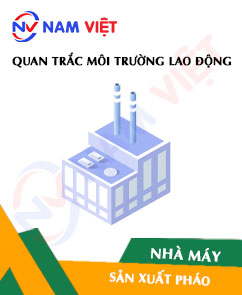
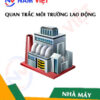
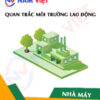
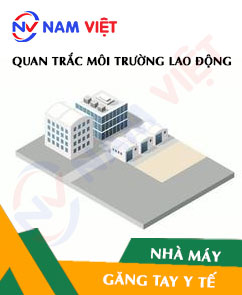


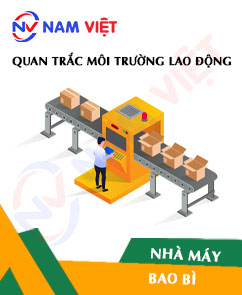

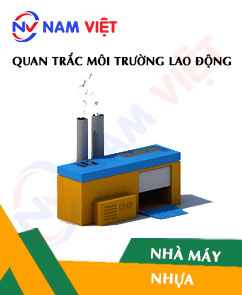


Review Occupational environment monitoring at a firework manufacturing factory
There are no reviews yet.